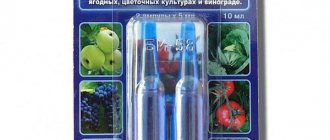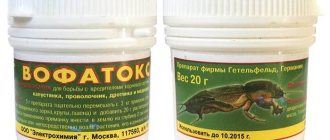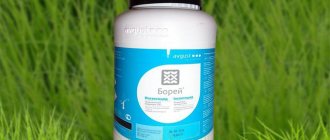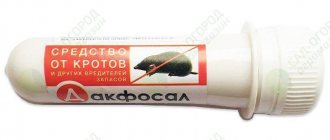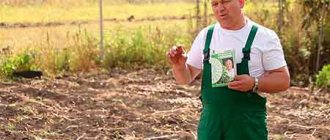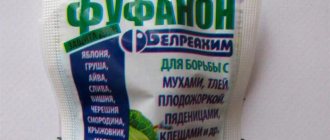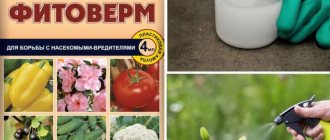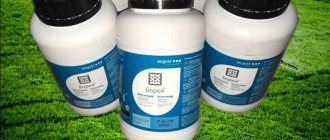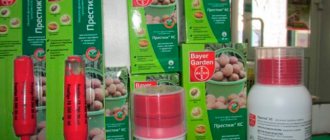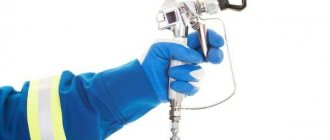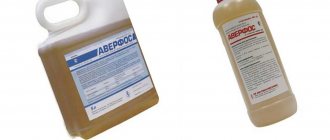In a world where there are so many bacteria and viruses, having a disinfectant is a must. There are animals around people who are also susceptible to bacteria and infections. Only by following the rules of hygiene and disinfection of premises for animals and birds can you protect yourself from various dangerous diseases. Next, we will talk about a drug such as “Iodine monochloride”, which is used for this type of disinfection. Let's find out what the features of its use are, what analogues of the drug exist, as well as reviews about this product.
What properties does it have?
“Iodine monochloride” can be studied in the attached instructions. The drug has the following effects:
- Is an antiseptic.
- Has an antimicrobial effect.
- Capable of destroying tuberculosis microbacteria, various viruses and fungi.
- It has an active effect against bacterial spores, anaerobic bacteria, eggs of a number of helminths, as well as against coccidia oocysts.
“Iodine monochloride” is classified as a highly hazardous substance (hazard class 2).
Composition and release forms of the drug
The drug is available in the form of an orange-yellow solution with a transparent consistency. Has a pungent odor of hydrochloric acid. When exposed to air it begins to smoke. Can be mixed with water or any type of alcohol in any ratio.
Main active ingredients: iodine monochloride (3%) and hydrochloric acid (30%). Excipient: water (up to 100%).
Packaged in glass bottles, vials, polyethylene bottles, canisters. Packing - from 100 grams to 50 kilograms.
What is the product used for?
“Iodine monochloride” is used for the following purposes:
- For the treatment of ringworm in animals.
- For treating the udder of cows as an antiseptic.
- Aerosolize the air in the premises of livestock and poultry farms in the absence of animals and birds.
- As a prophylactic agent and forced disinfection when processing livestock farms and poultry farms.
The following are processed:
- Technological equipment.
- Animal care equipment.
- Auxiliary objects.
- Refrigeration chambers.
- Egg shells.
Safety regulations
When working with a highly hazardous substance, you must follow safety precautions:
- Aerosol spraying and wet processing of livestock is carried out wearing protective equipment. Overalls, rubber gloves, tight-fitting goggles and boots are a must. Do not leave the skin exposed.
- The concentration of bactericidal vapors in the air is allowed not to exceed 5 mg/m3.
- The premises are processed in the absence of animals and children.
- Be sure to protect your respiratory system: with a gas mask or respirator.
- During treatment, it is prohibited to eat, smoke or drink alcoholic beverages.
- The containers used to contain the drug are immediately disposed of.
Who should not use “Iodine monochloride”
The instructions indicate the categories of persons who should not use the drug. This includes:
- People with hypersensitivity to the main active substance.
- Persons with allergic diseases.
- Women carrying a child and nursing mothers.
- Persons under 18 years of age.
As mentioned earlier, the drug is considered highly dangerous, so caution should be taken when using it. But more on that a little later. “Iodine monochloride” has found wide application in the disinfection of poultry farms and in the treatment of ringworm, as well as other diseases. Let's consider its use in more detail.
Indications for use
“Iodine monochloride” is produced in the form of a transparent yellowish-orange solution. There is a pungent odor of hydrochloric acid and smoke when exposed to air. Mixing with water and alcohol in any proportions is acceptable. The main substance of the external agent is three percent iodine monochloride. Water is an auxiliary component.
The product is packaged in glass, polyethylene and canister bottles. Packaging varies from one hundred grams to fifty kilograms. It is recommended to use the drug:
- for the treatment of ringworm in animals;
- for antiseptic treatment of cow udder;
- for aerosol air irrigation on farms in the absence of birds and animals;
- for prevention as a measure of forced disinfection on farms.
Not only inventory and technological equipment with auxiliary facilities are subjected to processing, but also eggshells and refrigeration chambers. The use of the drug is prohibited:
- people with hypersensitivity to the main component of the product, allergic diseases;
- women during pregnancy and breastfeeding;
- until the age of eighteen.
The drug is actively used to disinfect farms and to treat ringworm. Sick animals are treated with a 10% solution. To carry out the procedure, use a cotton-gauze swab or brush, irrigating both the affected areas and the healthy skin around them. The composition is rubbed in to improve penetration.
Be sure to treat each animal with a new swab. The brushes are washed under running water and dipped in a ten percent solution of “Iodine monochloride” for a quarter of an hour. Manipulations are carried out in a well-ventilated room or in the fresh air.
To treat lichen at the initial stage, several procedures with an interval of half an hour are enough. If the disease is advanced, treat at least three times a day for three days. The premises are disinfected with the essence of water and iodine in the required dosage. Spraying is carried out using special equipment. All procedures take place without the presence of animals.
After treatment and the necessary time for exposure, everything is washed with clean water. Ventilate until the characteristic odor disappears completely and dry. Animals can be launched after completing all actions.
Treatment for ringworm
Animals suffering from ringworm must be treated with a 10% solution of iodine monochloride.
Some processing rules:
- Use a brush or cotton-gauze swab.
- It is necessary to treat the affected areas, as well as the surrounding skin, with the solution.
- The solution must be rubbed as thoroughly as possible so that it penetrates into the hair follicles, under the thickness of the crusts that have formed.
- Each animal must be treated with a new swab.
- The brushes are washed under water and dipped in a solution of 10% “Iodine monochloride” for 10-15 minutes.
- Processing must be carried out in a well-ventilated area or, better yet, in the fresh air.
If the lichen is fresh, just a few treatments will be enough. There is an interval of 20-30 minutes between them.
If advanced lichen is being treated, then treatment must be carried out 3-5 times a day for 3 days.
How to apply it correctly?
To obtain a therapeutic effect against the background of ringworm, the lesions are treated with a 10% solution of iodine monochloride and medications based on triethylene glycol in a similar concentration.
Medicines penetrate well through the stratum corneum of the epithelium due to their oily structure, therefore they are evenly distributed over the entire surface of the affected skin.
Iodine monochloride is applied in a small amount, distributed with a cotton swab, gauze or brush. The solution is thoroughly rubbed into the affected areas and into the skin around them.
For a pathological process of mild to moderate severity, it is enough to carry out 1-2 treatments with a time interval of 30 minutes. In severe cases, when the animal’s skin becomes rough, the procedure is carried out up to 5 times a day for 72 hours.
In such a situation, the drug is thoroughly rubbed with maximum force to ensure the penetration of the active substances into the hair follicles and under the crusts of the horny epithelium.
If ringworm is present, therapy is carried out outdoors or indoors with good ventilation. To carry out disinfection for treating each individual, tampons or gauze are changed, brushes are cleaned, washed with water and disinfected for 10 minutes in a solution of iodine monochloride.
Methods of using the drug vary depending on the purpose of its use.
| Task | Application diagram |
| Disinfecting treatment of cattle udder | Carry out after milking. Use a 0.5 solution of the drug or a 10% triethylene glycol-based product. The disinfectant is applied using an aerosol or glasses. |
| Sanitation of premises from pathogenic microorganisms | Irrigation of room surfaces and technical equipment by spraying using a sprayer. |
| Disinfection as a preventive measure at livestock facilities |
|
| Routine disinfection of animal premises | Smooth and uneven surfaces are treated with 3 and 5% of the drug, respectively. It is left for 3-6 hours. Up to 500 ml of the drug is consumed per 1 m2. |
| anthrax | The medicine is left on the work surfaces for 3 hours. Treatment is carried out with 10% disinfectant. 500 ml of solution is required per 1 m2. |
| Refrigerated rooms or low room temperatures | Spraying is carried out in 3 approaches. For an area of 1 m2, 300-400 ml of the drug is needed. Before each spraying, the surfaces are treated with water at temperatures up to +70°C and 20% saline solution. 500 ml of liquid is consumed per 1 m2. |
| Pig erysipelas, atrophic rhinitis of a bacterial nature, viral inflammation of the liver in ducks, foot and mouth disease in cattle | The disinfectant is left for 3 hours. Treatment is carried out using a 5% solution of the drug, consumed per 1 m2 of 500 ml. The final treatment when cows are affected by foot and mouth disease is carried out at the same flow rate 2 times with an interval of 60 minutes. |
| African swine fever | Treat with a 3% bactericidal solution. 500 ml of solution is required per 1 m2. Apply once and leave for 3 hours. |
| Bradzot in sheep, tuberculosis, enterohepatitis | A 10% iodine solution is heated to +50°C. Disinfection is carried out 2 times with an interval of 60 minutes. 500 ml of the drug is used per 1 m2. Leave for 6 hours. |
| Paracaridosis | |
| Respiratory mycoplasmosis of chickens, geese, turkeys and ducks, salmonellosis | Treat with 3% preparation. 1000 ml of product is used per 1 m2. Leave for 60 minutes. |
| Parascariasis, ascariasis of pigs and horses | Apply 5% of the drug, which is preheated to +70°C. 1 liter of medicine is consumed per 1 m2. Leave the drug for 5 hours. |
| Coccidiosis | Use a solution of iodine monochloride in 10% concentration. Leave for 5 hours. 1 liter of product is used per 1 m2. |
| Strongyloidiasis | Treatment is carried out with a 3% solution of the drug, heated to +70°C. Leave for an hour at a consumption rate of 1 liter per 1 m2. |
Disinfection of premises
To disinfect premises, use a solution of “Iodine monochloride” of the required dosage in relation to tap water. The solution is sprayed using special equipment.
The following de-installations can be used: DUK-1, LSD-EP, UDP-M, DUK-1M, AVD-1 and other spraying equipment.
Disinfection of premises and technological equipment with “iodine monochloride” is carried out in the absence of animals.
After the room has been treated and the time required for exposure to the main component of the drug has passed, surfaces and equipment are washed with clean water. The room must be ventilated until the smell of the drug disappears and dried. After all this, you can let animals into the room.
Preventive disinfection
Dosage of solutions of “Iodine monochloride” for preventive treatment of surfaces:
- Metal surfaces, tiles, painted or whitewashed walls, glossy plastic and other smooth surfaces are treated with a 3% solution, while the disinfectant consumption is about 0.25-0.3 l/m2. The processing time is 3 hours.
- Brick, cement and porous surfaces, unpainted, wooden surfaces, channels for removing litter and manure and other rough surfaces are treated with a 5% solution. The processing time is 3 hours.
- During preventive treatment against mold fungi, refrigerators are treated with a 10% solution. Processing time: 1 hour.
Forced current and final disinfection
Since “Iodine monochloride” has antiseptic and sanitizing properties, disinfection in the presence of poultry and animals is allowed.
If our little brothers are diagnosed with infectious diseases of bacterial and viral etiology, which belong to group 2 in terms of resistance to disinfectants, treatment is carried out with the following solutions of the drug:
- Smooth surfaces - 3% solution.
- Rough - 5% solution. In this case, the consumption of the substance on all surfaces should be 0.5 l/m2. The duration of exposure to the disinfectant should be from 3 to 6 hours.
If the room temperature is negative, the solution of the required concentration is applied in fractional doses in 3 doses. When applying, you must follow some rules:
- Treat the surface with hot water (70 degrees).
- You can replace hot water with a solution of table salt (15-20%).
- Direct application of the “Iodine monochloride” solution, the effect of which should be 3 hours.
Let us pay attention to the disinfection of premises for certain dangerous diseases:
- Infectious atrophic rhinitis, swine erysipelas, viral foot and mouth disease, duckling hepatitis. For current processing, a 5% solution of the drug is used. The final treatment is carried out with the same solution twice, the consumption should be 0.5 l/m2. The interval between treatments is 1 hour. The duration of exposure to the disinfectant solution after the second treatment is 3 hours.
- African swine fever. A 3% solution is applied once, the approximate amount for treatment is 0.5 l/m2. Duration of exposure - 3 hours.
- Parascariasis of horses and ascariasis of pigs. The treatment takes place with a 5% solution of “iodine monochloride”, and it must be heated to 70 degrees. Duration of exposure - 1 hour.
- Infectious enterotoxemia and bradsitis in sheep, tuberculosis in birds and animals. A 10% solution of “Iodine monochloride” is heated to 45-50 degrees. Treat twice, with an interval of 1 hour. The exposure time in all cases is 6 hours.
- Coccidiosis of rabbits and birds. Treatment of the chicken coop with “iodine monochloride” is carried out in the presence of the bird. Use a 10% solution, which is heated to 70 degrees. Process once. Duration of exposure - 5 hours.
- Strongylatosis and strongyloidiasis. The 3% solution is heated to 70 degrees. Consumption is 1 l/m2. Exposure - 1 hour.
- Avian respiratory mycoplasmosis, salmonellosis. Use a 3% disinfectant solution. The exposure time of the disinfectant is 1 hour.
Eggs are processed as follows: immersed in a 4% aqueous solution of a disinfectant for 15 minutes. Then air dry.
The udder of cows is treated after milking with a 0.5% solution or a 10% solution with Triethylene glycol. The solution is applied to the udder nipples with a spray bottle or from a glass.
Application
Iodine monochloride is prescribed for the following purposes:
- Disinfection of industrial premises using an aerosol method.
- Air sanitation.
- Prevention and treatment of skin diseases.
Disinfection of industrial premises using an aerosol method
Disinfection of premises is carried out using spray equipment in the absence of animals. Preventive disinfection is carried out in accordance with the following scheme:
| Characteristics of the treated surface | Drug concentration, % | Solution consumption, l/m2 | Exposure time, hour. |
| Smooth surfaces: ceramic tiles, plastic, metal, painted or whitewashed walls | 3 | 0,25–0,3 | 3 |
| Rough surfaces: brick, cement plaster, porous plastic, floors, unpainted wooden surfaces, litter removal channels | 5 | 0,5 | 3 |
Forced disinfection is carried out during the elimination of infectious diseases according to the table:
| Purpose of disinfection | Drug concentration, % | Solution consumption, l/m2 | Frequency of processing | special instructions | Exposure time, hour. |
| anthrax | 10 | 1 | Two with an interval of 20 minutes | In frosty weather, disinfection is carried out in 3 steps | 3 |
| African swine fever | 3 | 0,5 | 1 | 3 | |
| Erysipelas, atrophic rhinitis of pigs, hepatitis of ducklings | 5 | 0,5 | 1 | 3 | |
| foot and mouth disease | 5 | 0,5 | Two with an interval of 1 hour | 3 | |
| Bradzot, infectious enterotoxemia of sheep, tuberculosis of mammals and birds | 10 | 0,5 | Two with an interval of 1 hour | The solution is heated to 50 °C. | 6 |
| Salmonellosis and avian respiratory mycoplasmosis | 3 | 1 | 1 | 1 | |
| Coccidiosis of birds and rabbits | 10 | 1 | 1 | The solution is heated to 70 °C. | 5 |
| Ascariasis of pigs, paraascariasis of horses | 5 | 1 | 1 | The solution is heated to 70 °C. | 1 |
| Strongylatosis and strongyloidiasis of ruminants and horses | 3 | 1 | 1 | The solution is heated to 70 °C. | 1 |
| Infectious diseases of silkworm caterpillars | 10 | 1 | 1 | 9 |
After exposure, the disinfected surfaces of the premises are washed. Drinkers and feeders are freed from residual feed and water. The room is ventilated and dried. After the smell of acid disappears, the animals are released.
Air sanitation
Aerosol air treatment is practiced in case of respiratory diseases in the presence of poultry in two ways - spraying a 30% solution of iodine monochloride or thermal sublimation. Spraying requires special equipment capable of providing particle sizes of less than 20 microns. The consumption rate is 1.2 cm3/m3. Exposure time is 30 minutes. When processing, close the doors and turn off the ventilation.
Sanitation is carried out for 3 days in a row with a three-day interval. To achieve a positive result, 10 to 12 sanitation sessions are required. Infected eggs are treated by immersion for 15 minutes in a 4% solution followed by air drying.
Thermal sublimation is convenient for small spaces. Iodine monochloride reacts with aluminum. Violet iodine vapor penetrates into the smallest cracks and crevices and destroys microbes.
Aluminum is poured into glass, ceramic or enamel dishes, which is filled with a twenty-fold amount of iodine monochloride solution. One liter disinfects 300–350 m3 of space. Smoke begins to be released after 1–2 minutes. Close the doors and turn off the ventilation.
With the correct ratio of reagents, aluminum is consumed in 10 minutes. After another half hour the room opens. To obtain a positive result, it is recommended to carry out 3 treatments with an interval of three days.
Prevention and treatment of skin diseases
Iodine monochloride is effective against ringworm. Areas that have been trimmed and cleared of scabs are treated with a 10% aqueous solution or a mixture of 1 part of the drug with 9 parts of triethylene glycol. Monochloride is rubbed into the affected areas with a brush soaked in the working solution or a swab soaked in the medicine. After half an hour, the treatment is repeated.
In advanced cases, sanitation is carried out up to 5 times a day for 3 days in a row. Animals are treated in the fresh air. The equipment is disinfected in the working solution for 15 minutes. To sanitize the udder after milking, use a 0.5% aqueous or 10% triethylene glycol solution of iodine monochloride.
Features of processing metal surfaces
In order not to expose metal equipment to corrosion, it is treated separately from other surfaces. “Iodine monochloride” is diluted in “Triethylene glycol” in a ratio of 1:9. This product is allowed to be used when a 10% solution of the drug is recommended.
If a 5% solution is required, metal surfaces are treated with a 50% solution. The iodine solution is diluted with water 50:50.
If a 3% solution is needed, use a 30% aqueous solution 30:70 to treat metal surfaces.
Features of preparation of the composition
During coccidiosis, the chicken coop is treated once in the presence of birds with a ten percent liquid heated to seventy degrees. The duration of exposure is five hours. For strongylatosis and strongyloidiasis, the three percent essence is heated to seventy degrees. It should work for an hour.
During respiratory mycoplasmosis in birds and salmonellosis, a three percent solution is used with an exposure of one hour. The eggs are immersed in a four percent composition for a quarter of an hour and then dried in air. After milking, the udder of cows is treated with a 0.5% solution or a ten percent mixture with Triethylene glycol.
When working with metal surfaces, follow the instructions. To prevent the development of corrosion, the surface is treated separately. “Iodine monochloride” is diluted with “Triethylene glycol” in a ratio of one to nine. Use the resulting drug with the recommended treatment with a ten percent composition.
For a five percent ratio, a fifty percent composition is applied to metal surfaces. Iodine and water are taken in equal proportions. For a three percent preparation, thirty percent essence is diluted in a ratio of thirty to seventy.
For respiratory diseases in animals, the procedure is carried out using an aerosol. There are two options. At the first stage, a disinfectant thirty percent aqueous solution is prepared. Using aerosol preparations, ten to twelve sprayings are carried out. The action is repeated for several days.
Aerosol treatment of premises
Aerosol treatment of premises is carried out for respiratory diseases in animals. It comes in two types:
- An aqueous 30% disinfectant solution is prepared. Aerosol devices are used, their brands were previously indicated, and 10-12 sprays are performed. Repeat the procedure for several days. After each spraying, wait 20-35 minutes. Spraying is carried out with windows and doors closed and ventilation turned off.
- A glass or enamel container with a capacity of at least 2-3 liters is used and placed at a height of 1-1.5 m at approximately the same distance from each other. Next, they are filled with “Iodine monochloride”, into which aluminum is then dipped. The ratio should be as follows: per 1 liter of solution - 50 grams of aluminum. The exothermic process begins after 1-2 minutes and lasts 5-10 minutes. The duration of the reaction is affected by:
- Purity of aluminum.
- Solution temperature.
To avoid too violent a reaction and for a more complete release of iodine, the use of “Iodine monochloride” with “Triethylene glycol” in a ratio of 1:9 is allowed.
You can spray Iodine Monochloride with aluminum in the presence of birds, but this will reduce the exposure time.
The duration of exposure to the disinfectant is at least half an hour. At this time, close the room tightly and turn off the ventilation.
The room is treated in pairs 3-4 times. The interval between treatments is 3 days.
Features of using the drug
Since this disinfectant is a highly hazardous substance, personal safety precautions must be observed when working with it:
- Use personal protective equipment:
- Robe or cotton suit.
- Rubberized apron.
- Rubber boots.
- Rubber gloves.
- Headdress.
- Protective glasses.
2. It is necessary to protect the respiratory system. For this use:
- Industrial gas mask with a filter cartridge, grade A.
- Respirators RPG-67A, RU-60M-A.
- Sealed glasses PO-2, PO-3.
3. While working, it is prohibited to drink, smoke, or eat.
4. Upon completion of work, you must wash your hands with soap, rinse your mouth, and wash your face.
If the substance comes into contact with the skin, it may cause a burn.
Long-term exposure to drug vapors may have the following consequences:
- Conjunctivitis.
- Clouding of the cornea of the eyes.
- Qatar of the upper respiratory tract.
- Severe irritation of the upper respiratory tract.
- Burns.
- Formation of ulcers.
Long-term treatment of the premises is carried out in the absence of staff and animals. Used containers for disinfectant solution must be disposed of. Livestock products can be used during and after processing.
general information
The drug is a light yellow liquid, fuming in air, with a pungent acidic odor. The solution contains 3% iodine monochloride and 30% hydrochloric acid. The drug is packaged in bottles and canisters with volumes ranging from 0.1 to 50 kg.
The cost of a 3 liter canister in June 2022 was 995 rubles.
Bacteria and fungi do not develop immunity to iodine. The drug is used as an external antimycotic agent and a room disinfectant by aerosol spraying. During thermal sublimation, gaseous iodine is formed, which sanitizes the respiratory organs of birds with respiratory infectious diseases. The drug is a highly hazardous substance and requires professional training of operators. Enters into chemical interaction with metals. To reduce corrosive activity, one part of iodine monochloride is diluted with 9 parts of triethylene glycol. Sanitation of organs d.
Analogues of the drug
A distinctive feature of iodine-based preparations is the absence of resistance to it in all microorganisms.
“Iodine monochloride” has analogues, that is, drugs similar in their action and composition:
- "Iodinocol."
- "Iodotriethylene glycol."
- "Cliodesiv".
- "Dixam."
All these medicines contain iodine and are used to disinfect premises.
Analogs
If the substance comes into contact with the skin, a burn is possible. From the action of vapors, conjunctivitis, clouding of the cornea, and severe irritation with catarrh of the upper respiratory tract can develop. During long-term manipulations, it is important to ensure that there are no animals or employees in the room. All containers used during the work are disposed of.
It is permissible to use animal products during and after treatments. All preparations based on iodine monochloride ensure the absence of resistance to the main component in microorganisms. In composition and action, Iodinocol is similar to the drug. "Iodotriethylene glycol." "Cliodesiv". "Dixam." You can use them to disinfect premises.
“Iodine monochloride” is in demand among poultry and livestock farms and breeders. The product is used with aluminum when cleaning large rooms after parrots. Convenient ease of use.
The product is distinguished by its affordable price. Before the first use, it is advisable to consult a veterinarian so as not to harm your pets and yourself.
Reviews about the drug
The drug “Iodine monochloride” is very popular among bird and animal breeders. Thus, people note its effectiveness both for preventive and therapeutic purposes. For example, when cleaning after parrots in large rooms, in chicken coops, this product with aluminum is widely used. They note the convenience that it can be used in the presence of animals and birds; the drug is easy to use. They also note that the price for the drug “Iodine monochloride” is more affordable than for other similar products (370 rubles per 500 ml).
If you are using the product for the first time, it is better to consult a veterinarian so as not to harm yourself and your pets, or carefully study the instructions for use.
